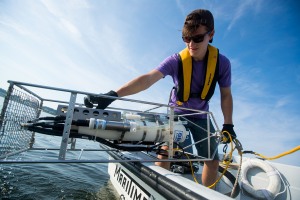PROVIDENCE, R.I. [Brown University] — Summer 2020 is panning out differently than Kate Reed imagined just a few months ago.
Reed, who is entering her fifth and final year in the Brown-RISD Dual Degree Program, planned to spend the summer making an installation for Burning Man — the well-chronicled art and community festival held annually in the Nevada desert.
Inspired in part by a Brown course she took in Fall 2019, Data Visceralization and Climate Change, Reed dreamed up and designed a work she called “Luna.”
“It was going to be this 12-foot dome covered in metal moths,” she said. “The entire dome was going to be connected to live tidal data and glow according to the tides. You would be able to go up to the dome, put your hand on it, and individual moths were going to pulse with your heartbeat. It was this idea of, how can I create this space where you can share your heartbeat with the heartbeat of the Earth?”
In light of the COVID-19 pandemic, Burning Man will take place only in cyberspace this year. But that doesn’t mean Reed is taking a creative hiatus this summer. Instead, she’s at work on three new biomimetic designs — tools or works of art that, like her proposed “Luna” project, use cutting-edge technology to draw people closer to their natural surroundings and to each other.

